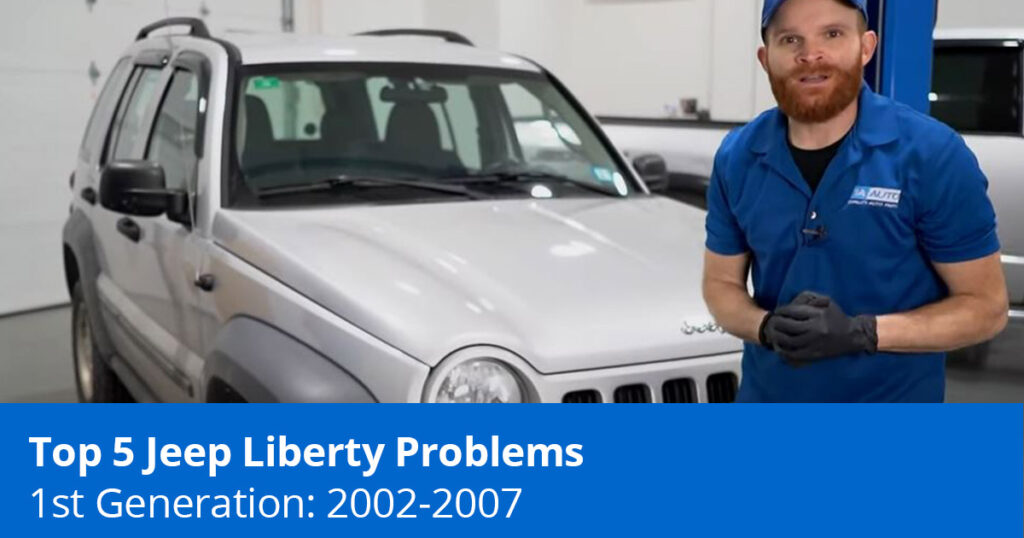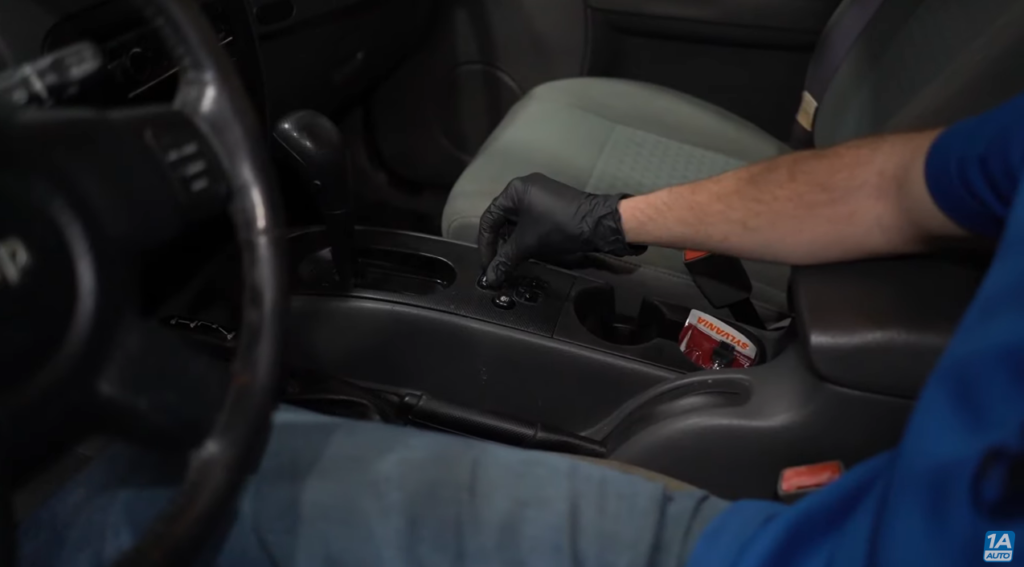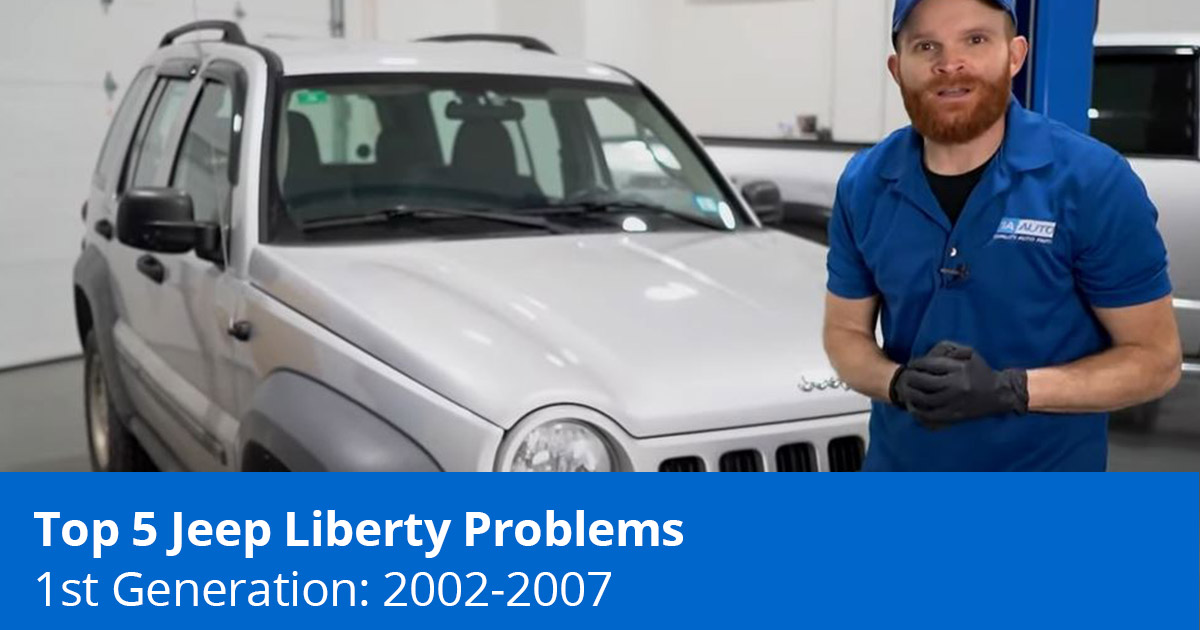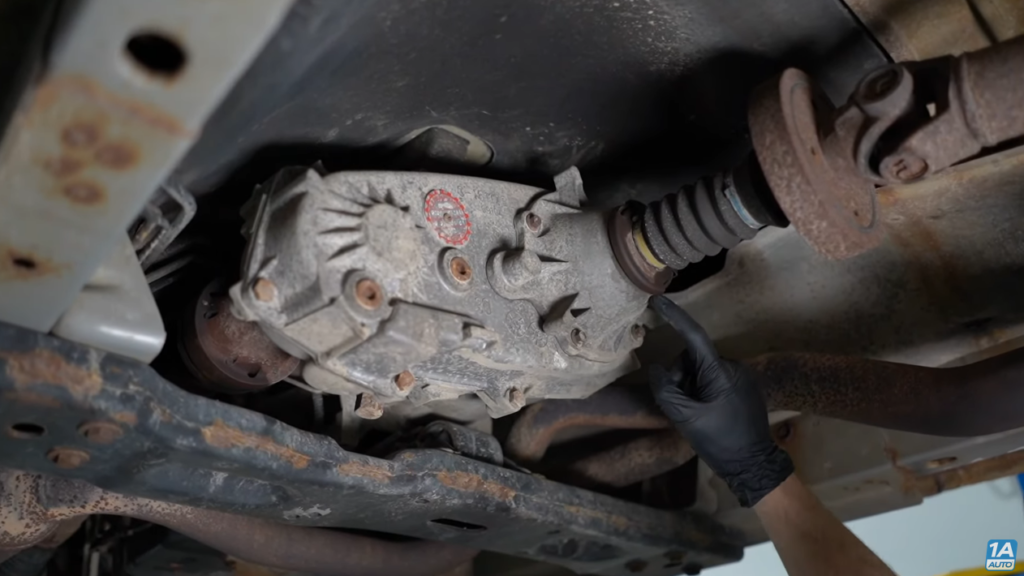
The first-generation Jeep Liberty SUV was introduced in 2001 for its 2002 model year as a replacement for the discontinued Jeep Cherokee XJ. It was a compact and spacious vehicle that buyers could take off-roading, cross country, and use daily for errands. If you own a 2002-2007 Jeep Liberty or are looking to get one for your daily commute, we’ve come up with a list of the top 5 most common Jeep Liberty problems that we’ve seen for the 1st generation. Most of them are simple maintenance issues you can take care of yourself.
Save Up to 50% Off Jeep Auto Parts and More

Top 5 Issues with the 1st Generation Jeep Liberty (2002 to 2007)
1. Internal Engine Valve Failure

Symptoms of Internal Engine Valve Problems on the 1st Gen Jeep Liberty
Some of the symptoms that you’ll notice include a flashing check engine light that pops up on your dash. This is caused by one or more valves that are stuck or not functioning as they should.
The check engine light may be accompanied by an engine misfire or loss of power. If you notice your Jeep doesn’t have as much power as it used to, the problem could be the intake valves.
Causes of Internal Engine Valve Problems
The intake valves found in the Jeep Liberty are responsible for drawing in the right amount of air into the engine’s combustion chamber. The air is then mixed with the right amount of fuel to provide the required energy during combustion.
Unfortunately, the intake valves that come from the factory in the 2002-2007 Jeep Liberty are not up to par. They need to be replaced with an updated version that can draw in the right amount of air.
How to Fix Internal Engine Valve Failure
You’ll need to dig into your engine to fix the problem. This requires some special tools and measuring devices. You’ll also need to get the updated version of the intake valves as a replacement. Without these, you wouldn’t be able to fix the issue.
2. Power Window Motor Failure

Symptoms of Power Window Motor Failure
The power window motor is an electronic part of the window system that drives the regulator. The regulator then pushes the window up or down, allowing users to open and close the window at the push or pull of a switch. When it goes bad, you’ll either have a window stuck all the way up, in the middle, or all the way down.
Causes of Power Window Motor Failure
The problem mostly occurs during winter when snow accumulates on the glass and causes it to stick. When you push on the switch, the motor struggles to open the window and eventually burns. You could also have a window regulator that’s stuck or jammed in its position and unable to move. This will also cause the motor to burn and fail.
How to Fix Power Window Motor Failure
You’ll need to get behind the door panel to access the window motor. The best thing to do is to test for power and ground. If you have both going to the motor but none coming out, you’ll need to replace it. Also, inspect the window regulator and replace it if it’s damaged.
3. Power Door Lock Failure
Symptoms of Bad Power Door Locks
The power door locks found in the 1st gen Jeep Liberty come with actuators that direct the lock system to either lock or unlock the door each time you press a button. Some of the symptoms that you’ll notice when your door locks go bad include a squeaking noise, doors that do not lock when you press the button, and a lock that’s binding.
Causes of Power Door Lock Problems on the 1st Gen Jeep Liberty
The symptoms above can happen on one or more doors. However, if only one door has this issue, the most probable cause is an electric issue. Squeaking noises and a door that’s struggling to work would indicate that something is binding inside the door panel. You’ll need to get behind the panel to fix the problem.
How to Fix Door Lock Problems on the 1st Gen Jeep Liberty
The best place to start for fixing power door lock failure would be at the latch assembly. The assembly is connected to the lock and prevents the door from opening any time you close it. You’ll need to also test it for power and ground.
If you don’t find power and ground, you’ll need to trace where the problem is. A burnt fuse or broken wire may be causing it. In case of binding, check your rods to ensure they are not stuck or frozen. All of this may boil down to replacing the latch assembly.
4. Exhaust Manifold Leaks
Symptoms of a Bad Exhaust Manifold
- Noticeable ticking noise when the engine is cold
Causes of Exhaust Manifold Leaks on the 2002 to 2007 Jeep Liberty
All combustion engines have an exhaust manifold that collects exhaust gases from the cylinders and directs them out towards the tailpipe. The 1st gen Jeep Liberty has a V6 engine with two banks. Each bank comes with its own exhaust manifold.
The manifolds are located close to the engine. They tend to expand when the engine is hot and contract when the engine is cool. Eventually, the manifold cracks.
This is not new as it happens in most cars. In the 2002 to 2007 Jeep Liberty, the problem lies with the mounting hardware that holds the exhaust manifold to the engine. The hardware comprises small bolts, nuts, and studs that are made of metal, and they also undergo the same process of repeated expansion and contraction.
Water can also cause corrosion and looser bolts. This causes the manifold to start pulling away from the engine, creating a ticking noise caused by exhaust gases escaping from the gasket found between the engine and the exhaust manifold.
The noise is most noticeable when the engine is cold and dies down when it warms up. To fix the problem, you’ll need to first find the source of the noise. Any broken studs will need replacement. You’ll have to take the entire manifold out for this.
How to Fix Exhaust Manifold Problems
Make sure the engine sits flat and that the manifold isn’t warped. You’ll need to replace the manifold if it shows any signs of damage or cracks.
5. 4WD Unit Leaks
Symptoms of Four-Wheel Drive (4WD) Unit Leaks
For our last 2002-2007 Jeep Liberty problem, we’ll talk about the four-wheel-drive unit leaks that are common to this SUV. These normally take place either at the front or rear differential.
The first place you might see a leak is at the pinion seal that goes in between the driveshaft and the differential. This also happens where the axle seals are located and where the output seal goes on the transfer case.
Causes of 4WD Unit Leaks
All of the seals mentioned above are made of rubber. They eventually wear out due to continuous movement and exposure to external elements.
How to Fix 4WD Unit Leaks
You’ll need to remove the wheel assembly to replace the axle seals and disassemble the transfer case to access the output seal. Remember to replace the fluid after resealing everything.
1st Generation Jeep Liberty Model Years
- 2002 Jeep Liberty
- 2003 Jeep Liberty
- 2004 Jeep Liberty
- 2005 Jeep Liberty
- 2006 Jeep Liberty
- 2007 Jeep Liberty
Related Content
- Why Are My Power Windows Working Intermittently?
- Why Is My Power Window Not Working?
- Door Lock Actuator Not Working?
- Remote Key Won’t Unlock Car Door? [Expert Tips to Diagnose & Fix]
- Think You Have An Exhaust Manifold Leak?
- Rear End Noise? Diagnose & Fix a Rear End Differential Problem
Shop 1st Gen Jeep Liberty Parts






2-12-22. My 2005 liberty 4 wheel 132k mi. left lower ball joint failed. Visited my Jeep dealership about recall failures. He said performed “6-11-2007”. Sounds right. But no recorded mileage or that “THEY” did the repair. Even though I had proof that it was incorrect parts installed because there’s a threaded hole top center, never installed grease fitting , both sides. I took pics to show other side. He seemed dumbfounded and said he would need to do some e-mailing to see what he could do. Since I am the original owner I think I will wait for his response. Could be interesting. Passenger side still on Jeep. Maybe next week? Maybe next month? Looking for my receipt. 🙁
Your video looks to have ball joints non greasable ( both old and new ). I do not have the privilege of knowing why original ball joints failed prematurely and recalled. However this does directly effect life or death. I was lucky to control Jeep when mine BROKE at 45 mph. Rim and tire destroyed. BP up a bit.
Possible lack of enough / not correct viscosity of grease applied at assembly. How about replacement. No way of KNOWING unless greasable. OK, maybe no grease will get to actual friction area, but flush away junk. I decided to replace mine with Moog pn K80767. There is notch in boot a about 1/8″ for excess grease to escape when greasing. And its noted in their install instructions to keep notch towards transmission to keep expelled grease away from brake parts. Also notes that horizontal-ish grease fitting pointing to rear.
In your video the tie rod end is greasable. My original factory ones are not. Tie rods in video have been replaced by
greasable ones. Given the weight and force on ball joint verses tie rod, I think the extra $10.00 well worth it. Better to check any lubricant needed parts -tie rods, ball joints, universal joints while doing oil change. Repairing myself is self satisfying / rewarding. Not looking to ask you to change your supply chain, but has anyone else had this issue?